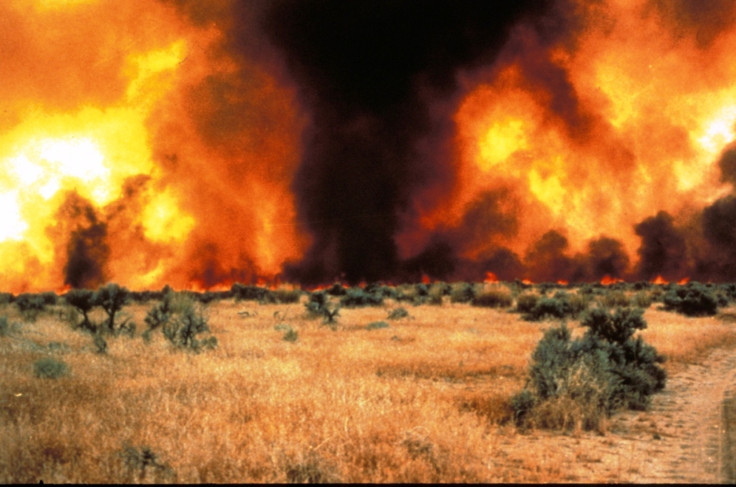Invasive Grass Fuels Wildfires In Western US

Cheatgrass, also known as drooping brome, isn't an impressive plant to look at: a scrubby-looking weed with a crooked head and dark green leaves tinged with purple. But this invasive grass is contributing to bigger and more frequent wildfires in the western U.S., according to new research published in the journal Global Change Biology.
The grass, a native of Eurasia, was likely spread by the march of settlers across North America in the 1800s, possibly mixed in with wheat. Currently, cheatgrass is estimated to cover about 40,000 square kilometers of the 650,000-square kilometer Great Basin, a watershed region centered in Nevada that reaches into California, Oregon, Utah, Wyoming and Idaho.
The dominant native shrubs and bushes are perennials, sometimes lasting for decades, and grow spaced out from each other. But cheatgrass, an annual plant, goes through its entire life cycle in one season, quickly springing up wherever water is available. In the arid Great Basin, that meant inserting itself between native plants.
“The grass fills in these spaces and creates a continuous carpet of fuel,” lead author and Penn State University researcher Jennifer Balch said in a phone interview.
Balch and her colleagues set out to figure out just how much the invading cheatgrass was affecting wildfires in the Great Basin region.
Scientists and land managers have long known that cheatgrass posed a fire risk, but “the question hasn't been asked at this scale before,” Balch says.
One of the biggest challenges was coming up with a way to figure out where exactly the cheatgrass was in a given year.
“Normally when using this kind of sensing, you don't have success in identifying a specific species. But in this case, we have an invasive species that is a totally different functional type from the rest of the ecosystem,” co-author and University of Massachusetts Amherst biogeographer Bethany Bradley explained.
The cheatgrass, which germinates between fall and spring, will quickly respond to wet winters that occur during El Nino cycles. Because the cheatgrass is more responsive to this phenomenon than native plants, Bradley figured out a way to exploit this trait in order to pick cheatgrass-covered areas out of satellite data.
“You're looking for pixels where you have really strong green response following the El Nino years but not the dry years,” Bradley says.
The team then combined their knowledge of the cheatgrass coverage in the Great Basin with data on decades of wildfires, culled from both NASA satellite data and the U.S. Geological Service's fire registry.
From 2000 to 2009, 13 percent of cheatgrass cover in the Great Basin burned – more than double the proportional amount that any other kind of plant burned. During the 1990s, cheatgrass burned nearly four times as frequently as any other vegetation type. Cheatgrass was also fueling most of the largest wildfires on record – 39 out of the biggest 50. Fires in cheatgrass-covered lands also tended to be larger than the fires on areas mostly covered by other kinds of plants.
“These results demonstrate that cheatgrass invasion has substantially altered the regional fire regime,” the authors wrote.
The work suggests that getting cheatgrass under control is an essential part of controlling wildfires. Once established, the grass is hard to root out, but it is not invulnerable. It can be pulled by hand or tilled, before the seed heads turn purple – mowing is not recommended, because the mown plants may still release seeds. Other strategies involve grazing livestock, and scientists are also working on a special kind of fungus to attack cheatgrass seeds.
Worsening droughts in the Western United States, often linked to climate change, may raise fears about constant wildfires. But though cheatgrass burns easily, drought alone isn't the exact recipe for a weed-fueled wildfire.
“The strongest fire years were in a dry drought year following a wet year,” Balch says.
SOURCE: Balch et al. “Introduced annual grass increases regional fire activity across the arid western USA (1980-2009).” Global Change Biology published online ahead of print.
© Copyright IBTimes 2024. All rights reserved.





















